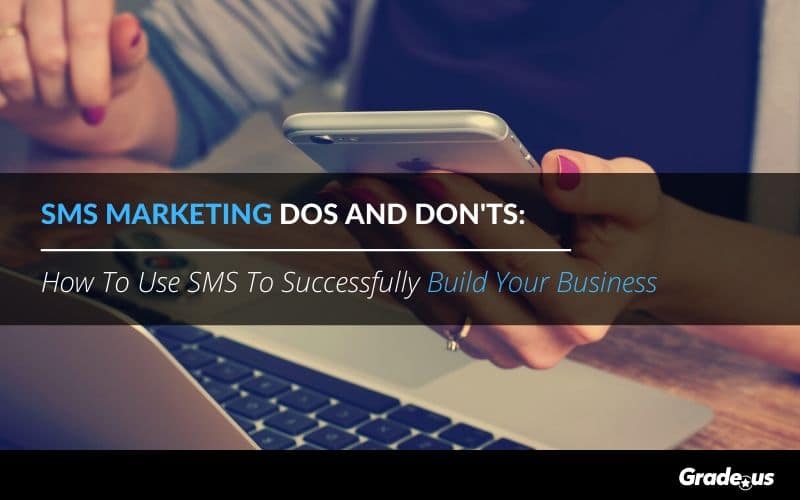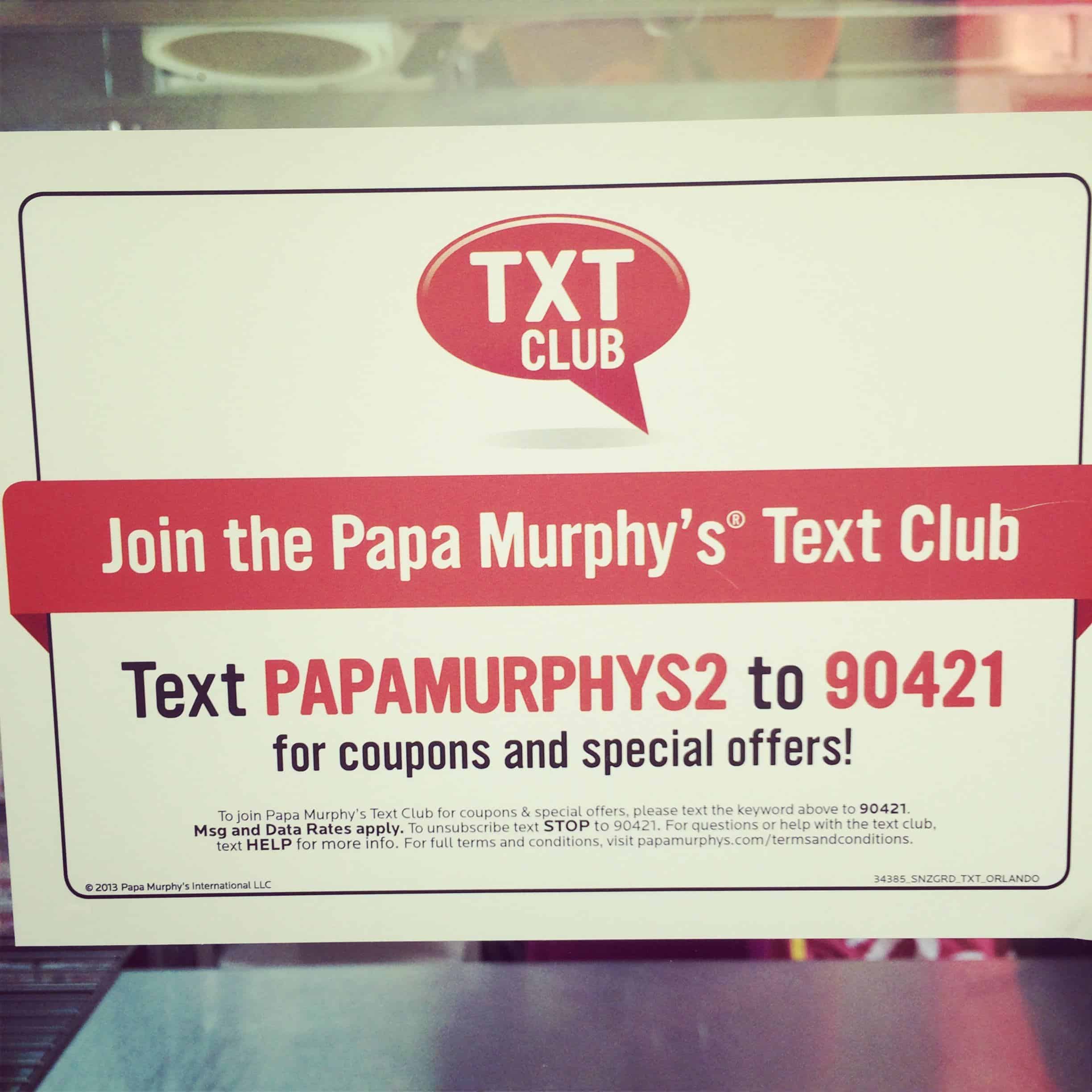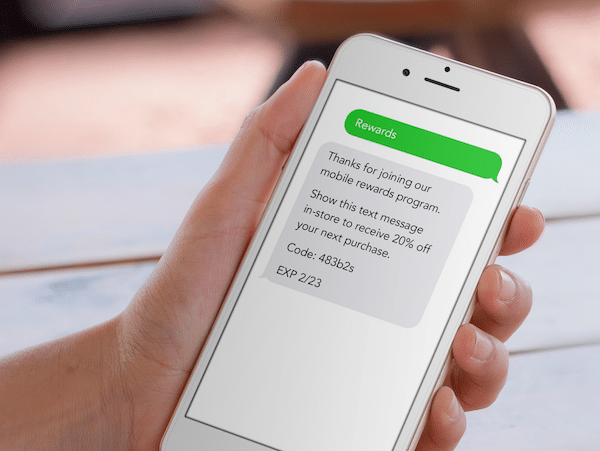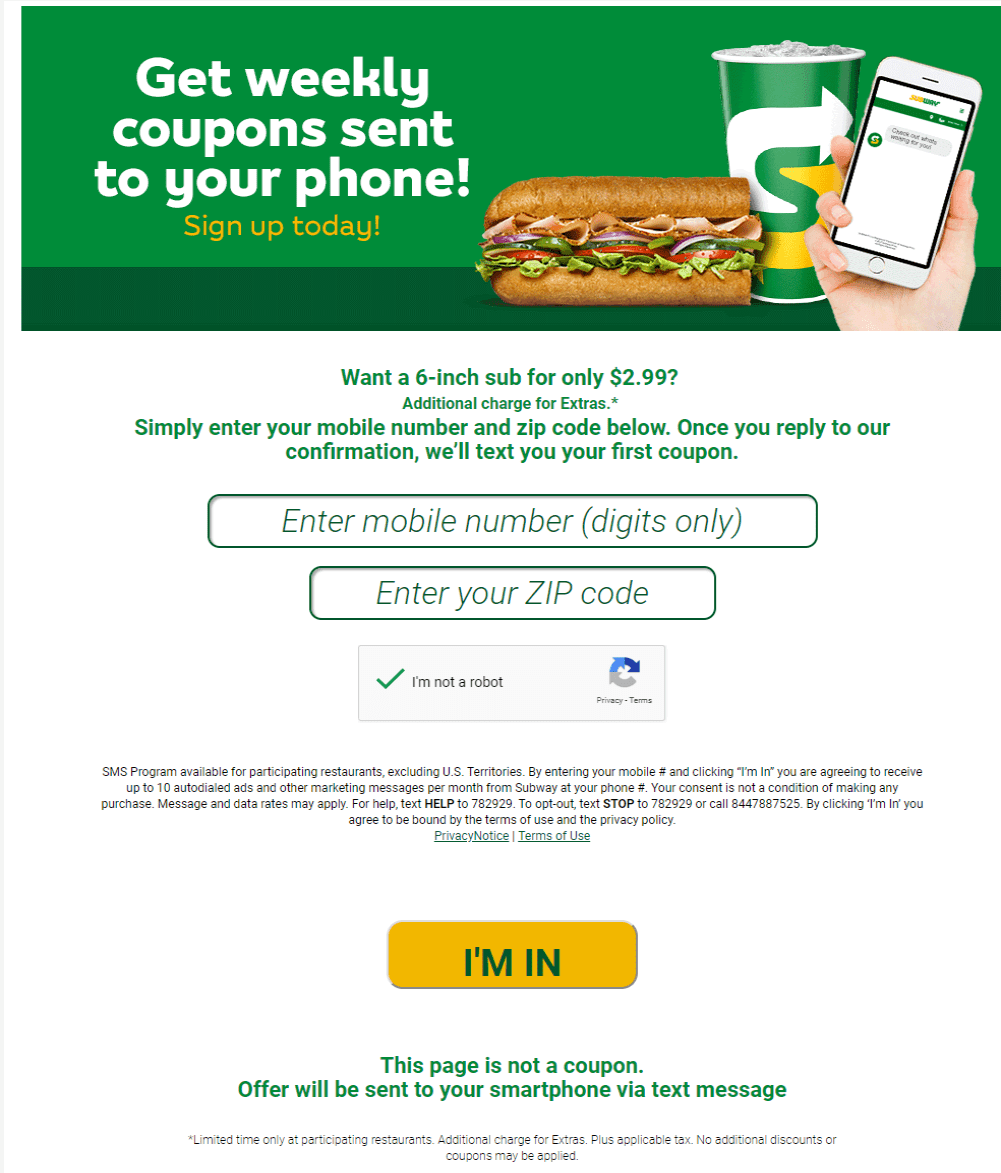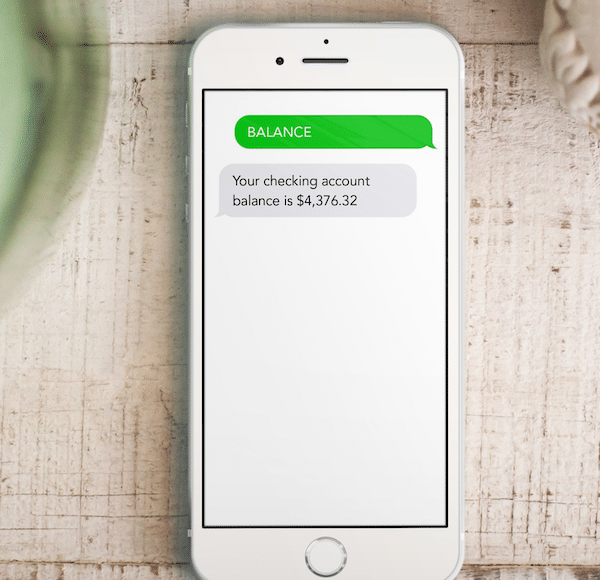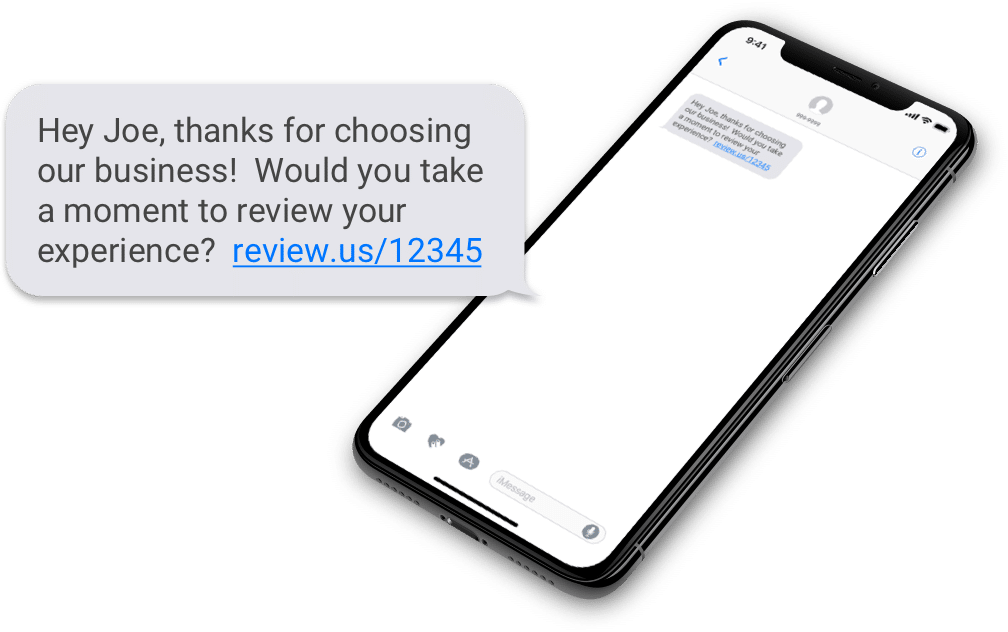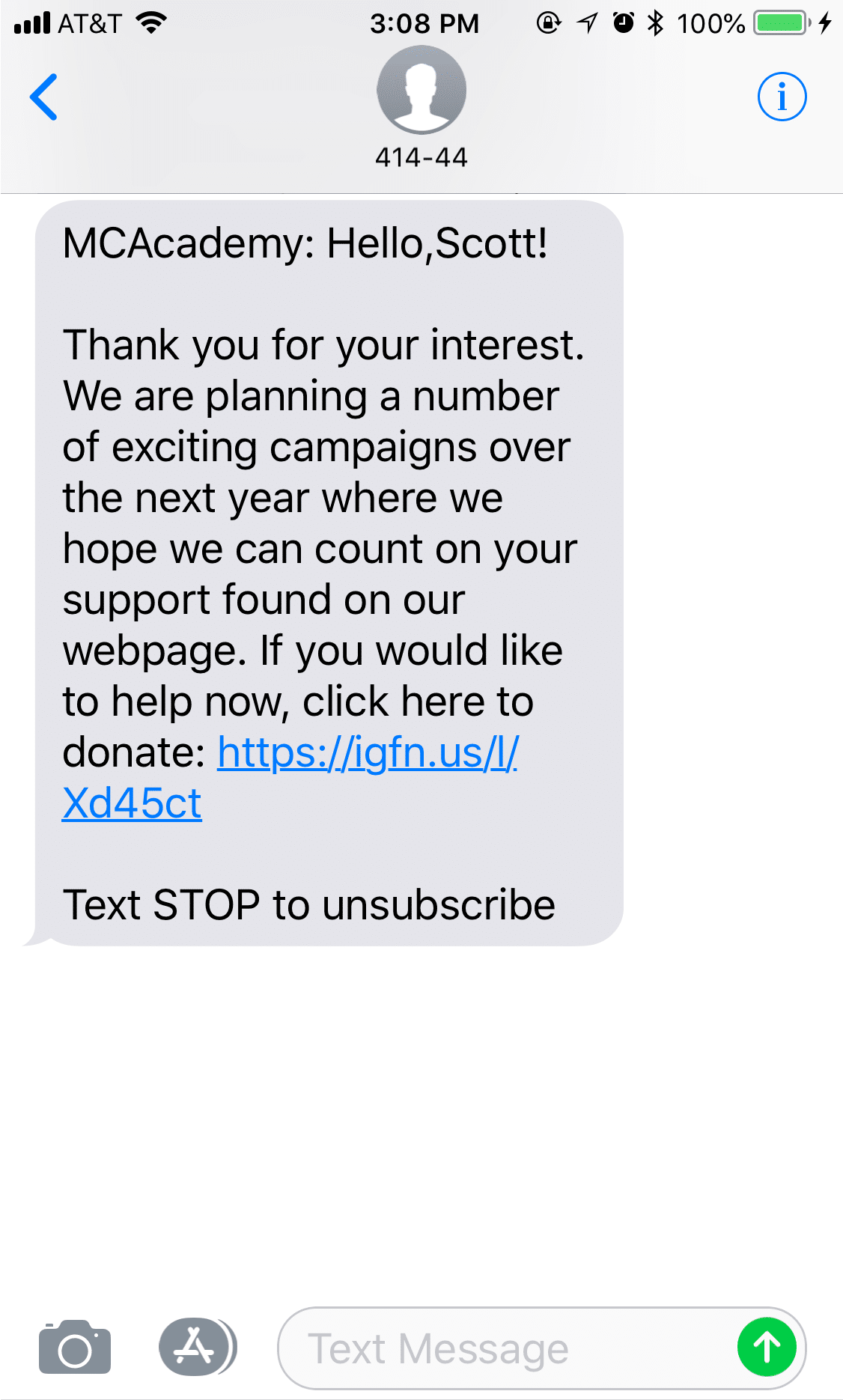Customers love SMS marketing.
Research from SMS Comparison shows SMS marketing boasts a 98% open rate; 95% of SMS messages are read and responded to within 3 minutes. Even more interesting is the fact that 50% of US Consumers receiving branded SMS messages go on to make direct purchases.
It’s the only channel that achieves these response rates routinely.
Today, we’re going to take a closer look at SMS marketing. We’ll cover the dos and don’ts. I’ll also show you how to use this marketing channel profitably, avoiding any unpleasant compliance issues.
Table of Contents
What is SMS Marketing?
SMS marketing is marketing through your cellphones’ short message service, hence the name SMS marketing. SMS marketing is a marketing channel that’s governed by five Federal and industry sources.
- Federal Communication Commission (FCC): An independent agency of the United States government that regulates communications by radio, television, wire, satellite, and cable across the United States.
- Federal Trade Commission (FTC): An independent agency of the United States government that enforces civil antitrust law and promotes consumer protection.
- Telephone Consumer Protection Act of 1991 (TCPA): This act was created to control mobile communications. Companies must adhere to strict solicitation rules and honor the National Do Not Call Registry.
- Mobile Marketing Association (MMA): A global non-profit mobile trade association comprised of more than 800 member companies, from nearly 50 countries around the world.
- CTIA — The Wireless Association: is a trade association representing the wireless communications industry in the United States
As a marketing channel, SMS marketing relies on phone carriers’ networks to distribute your marketing content. It’s no surprise then that carriers also have specific guidelines and best practices they’d like marketers to follow. Carrier guidelines are second to Federal and industry regulators.
Best practices for SMS marketing
Unless message recipients have opted-in or given consent, the TCPA has a list of general provisions marketers are expected to follow. The requirements handed down by Federal and industry sources state that:
- Organizations must receive express written consent from individuals before sending any SMS messages to them. This means no old, rented, or purchased lists.
- Obtaining (or buying) an individual's phone number is not the same as receiving permission to contact them. It doesn't matter if that individual is a lead, an existing or former customer, or a current member of your organization. You still need permission.

- Any advertising, on any channel or sign-up form that solicits mobile numbers, must provide clear disclosure. You should disclose the name, description of your program; you should also disclose the frequency of your messaging (i.e., 1 msg per week). The URL to your terms and conditions, privacy policies, and stop/help information. How individuals can opt-out of your program, HELP instructions, and additional carrier costs disclosures.
- Businesses and organizations must avoid coercion. You can't require an individual's consent as a condition of purchasing anything.
What does this mean for opt-ins?
How exactly can you get customers to join your mobile database? These do’s and don’ts aren’t making it all that easy. Here are three ways to earn that coveted opt-in from your customers.
1. Your customers can text a keyword from their mobile phone to your SMS platform directly. This is mobile originated (MO) messaging that qualifies as proof of your customers’ opt-in. Your customers can send two types of MO messages — keywords: REWARDS or a shortcode: 5959.
2. Your customer fills out an online form to opt-in. If you’re compliant with the do’s and don’ts I previously mentioned, your form explicitly states what individuals will receive when they share their mobile number. You’ll also need to make the appropriate disclosures, as discussed above. You may be responsible for storing these opt-ins as proof of written consent, depending on the vendor or hosting provider you choose.
3. Your customer opts-in via a paper form. The requirements are the same here. You’ll need to state explicitly what your customers will receive when they share their mobile numbers with you. You’re also responsible for storing these opt-ins.
Okay! There’s just one more important detail regarding opt-ins that we haven’t discussed yet.
Expiration.
That’s right, when it comes to SMS marketing, opt-ins expire automatically after a predetermined period of inactivity. If you haven’t sent a message to your subscribers in that timeframe, your campaign is “inactive.” You’re no longer allowed to contact your subscribers or transfer them from one messaging provider to another.
Here’s a brief breakdown:
- Standard rate campaigns are campaigns that don't charge subscribers a fee (other than standard data/message rates). Opt-ins expire after 18 months.
- Premium rate campaigns — the kind of campaign subscribers pay to join — these opt-ins expire after 6 months.
At this point, you’ve handled the logistics for your SMS marketing campaign. While it’s technically possible to send out SMS campaigns manually via your personal mobile device, it’s not recommended. Delivering SMS marketing content at scale requires software to be successful.
SMS marketing software: What you'll need
SMS marketing software enables you to create and manage subscriber contact lists, schedule message delivery, and analyze open rates. It’s a bulk messaging tool that enables you to manage the day-to-day requirements and compliance expectations of SMS marketing.
First, you’ll need to identify your needs.
You may prefer specialized software (e.g., SMS software for hotels), or you may prefer to filter software options by cost, features, industry, size, etc. It’s a good idea to determine what you’re looking for ahead of time, so you’re able to compare your options.
Generally speaking, you’re looking for a specific set of features.
- Mass messaging: Bulk message delivery, enabling you to share content with a large or small audience, all at once.
- Message scheduling: You should be able to schedule a time to broadcast your message to specific individuals, subscriber segments, or entire lists.
- Keyword and Shortcodes: These identifying keywords and shortcodes give subscribers the control they need to interact with your campaign (e.g., YES to confirm NO to cancel or STOP to stop msgs).
- Reporting and analytics: You'll need this data to analyze your campaign performance. You'll want to get a sense of your opens, clicks, subscribes, unsubscribes and more as this will help you improve your overall conversion rate.
- Managing contacts: Your SMS software should store your subscriber's contact details, including their name, address, phone number, address, etc. in a format that's easy to browse/search through.
As far as your SMS vendor is concerned, you’re looking for a provider that can provide you with assurances regarding your scalability, uptime, and reliability. They should be able to handle the volume of messages you need without faltering.
It’s also a good idea to work with a provider that provides you with either API access, or ready-made integrations with the software you already use (directly or via third-party platforms like Zapier).
What about pricing?
Most providers in the industry use volume pricing; your bill is based on the number of SMS messages you’d like to send out each month. A reasonable estimate, as of June 2020, would be $0 to $0.05 per SMS message, per month. What if you don’t have any money?
Free SMS marketing for the cash strapped
- EZ Texting offers a 14-day free trial that includes 100 free credits, one demo keyword, and MMS. They include a pay as you go option that starts at $0.05 per SMS sent.
- TXT 180 offers a 15-day free trial for those who are cost-conscious and looking to get started with SMS marketing for free. While the free trial is nice, it’s not free indefinitely.
- SlickText offers a freebie plan. Fifty texts per mo, one keyword, unlimited contacts.
- RapidSMS is a free, open-source SMS tool that was originally built by UNICEF’s innovation unit in 2007.
- Twilio free. If you’re light on cash but heavy on skill, a free Twilio account may be just the ticket. With their free account, you can launch SMS marketing campaigns and more.
- Frontline SMS. Frontline is as close to free as you can get. It’s a paid service, but they’re more than willing to work with tiny budgets for small groups of people. They’ve worked with the CDC, Oxfam, NYU, Polaris, World Vision, and more.
Paid SMS marketing for high-performance teams
- TextMagic has a specific niche they’re focused on: Email to SMS, online SMS, Email to SMS Gateway & SMS API.
- SimpleTexting as the name implies SMS marketing is simple, easy, and efficient with SimpleTexting. It’s a straightforward option for those who are looking for a simple yet powerful option. They’re pricy but easy to use, and reliable. They have an API, and they integrate with a variety of services you already use.
- ClickSend is a cloud-based gateway service for your business that lets you send bulk SMS, email, fax & letters worldwide.
- Salesmsg is a two-way SMS and MMS business texting software that makes it easy to have real-time text message conversations at scale—fully integrated with HubSpot, Infusionsoft, ActiveCampaign, Pipedrive, Marketo, and Zapier.
- Heymarket offers shared inboxes for managing SMS campaigns. As far as solutions go, this option is perfect for teams that need to work together.
- Twilio is a communication API that enables you to customize your message, with a significant amount of detail. This option is great for organizations that have the time and resources needed to develop or customize a solution using Twilio’s platform.
Specialty SMS marketing tools for marketers
- Grade.us has a robust SMS marketing tool that’s focused exclusively on online review management. What makes Grade.us so powerful is the fact that their SMS and email review request campaigns can be designed to work together, providing data and analytics in one, seamless dashboard.
- GatherUp is another specialist that’s focused on review and customer experience management. With GatherUp’s TextBack feature, they offer both inbound and outbound SMS requests that are specifically designed around gathering online reviews.
Once you have chosen the right tool for your business, design your SMS marketing campaign.
What is an SMS marketing campaign?
An SMS marketing campaign is a series of messages that enable subscribers and businesses to interact with each other via text. An SMS campaign consists of four steps.
- Set up your landing pages or opt-in forms. These could be web forms like the one I referenced above, or a print form.
- Set up your SMS keyword and shortcode. This could be Text “REWARDS” to 23456; text STOP to stop msgs.
- Develop a campaign around your keyword and shortcode (i.e., Text REWARDS to 23456 to receive exclusive member rewards!). Using your landing pages, opt-in forms, keywords, and shortcodes, you can build a cohesive advertising campaign around your SMS campaign.
- Send out regular updates to engage with your customers/subscribers.
Like email marketing campaigns, SMS campaigns are designed to communicate with customers/subscribers over time. SMS comes with a variety of compliance requirements but is actually more simple than traditional email marketing.
Small business SMS marketing
You don’t need to reinvent the wheel here. There are several tried and true methods you can use to make SMS marketing work for you. Here are some creative ways you can use SMS campaigns in your business or organization.
Coupons are a great way to increase location-specific foot traffic and conversions.
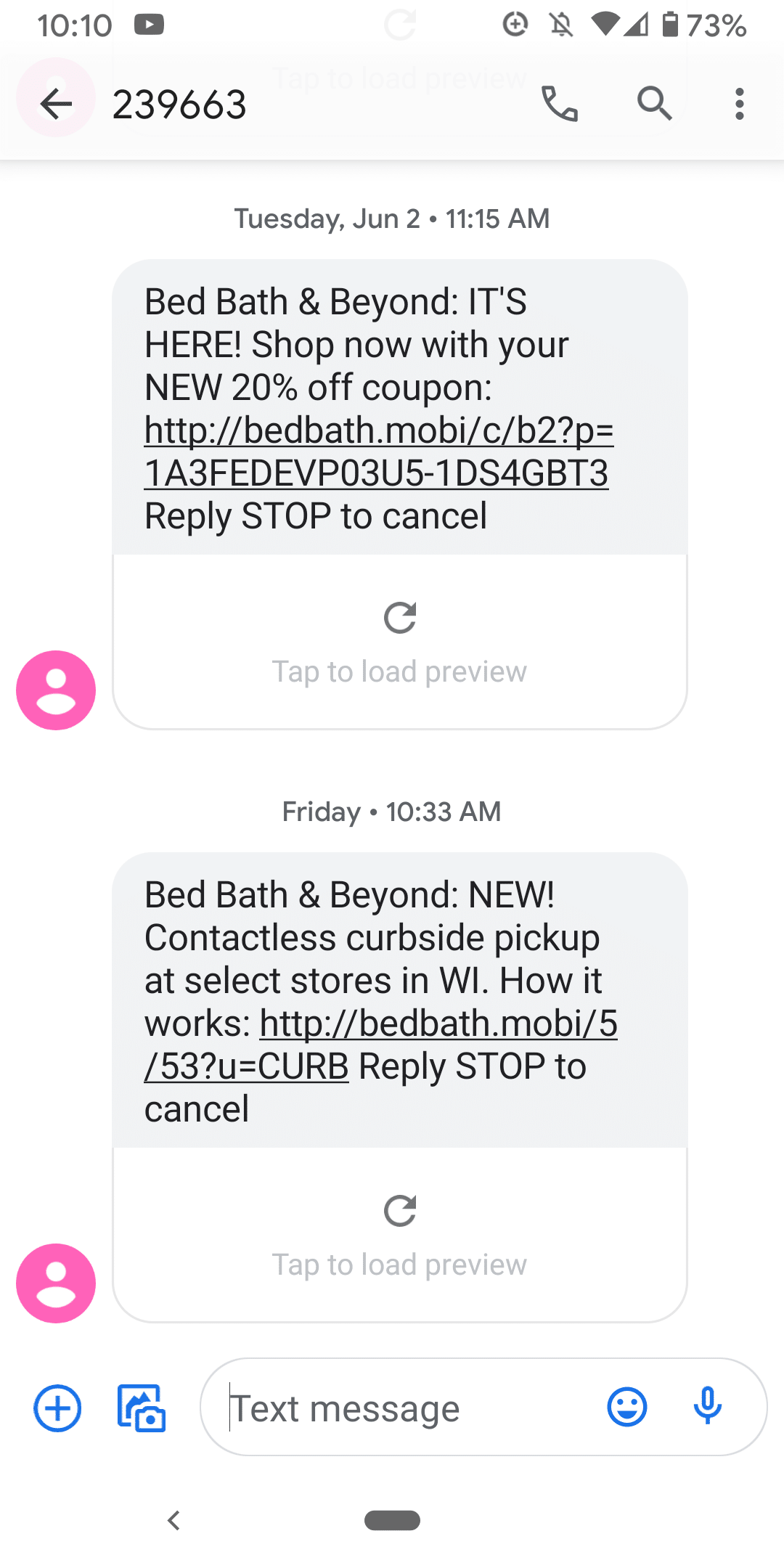
Account alerts. This gives customers the ability to make inquiries regarding their accounts. For example, law firm clients could text balance a shortcode to view the remaining balance on their retainer.
Autoresponder campaigns. These are a great way to follow up with customers. The obvious option is using an autoresponder sequence to request a review from recent customers.
Polls and voting. This is a great way to get qualitative data and informal market research from your customers or audience.
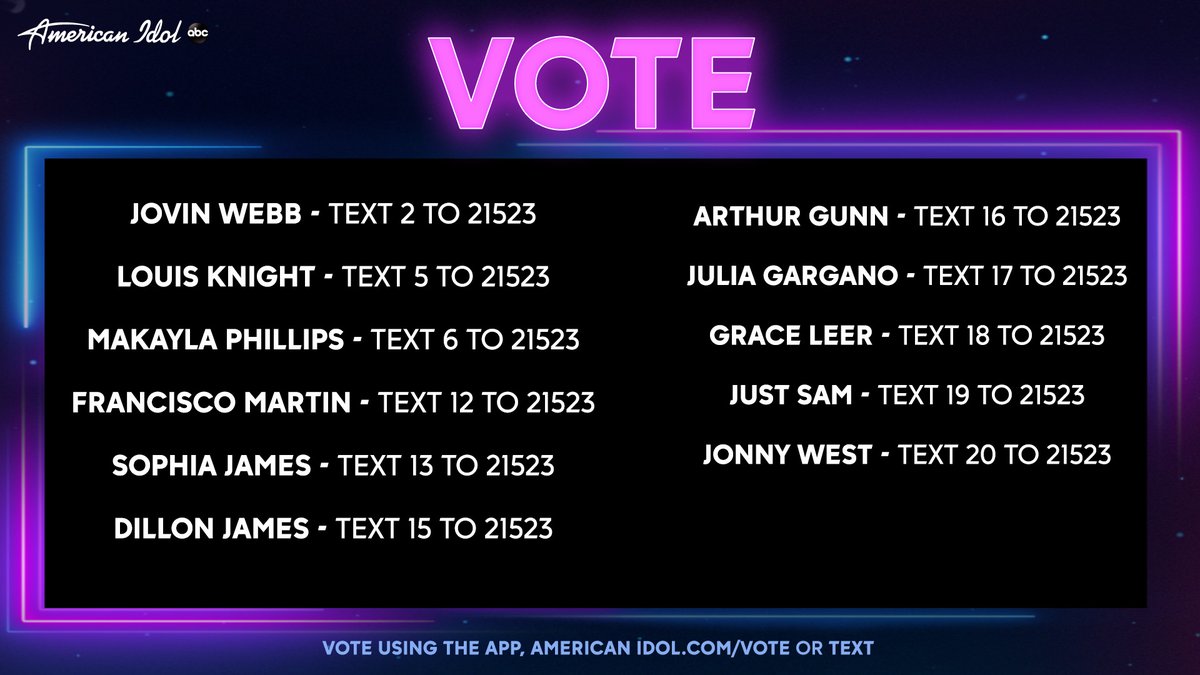
Contests. You can use games, giveaways, and sweepstakes as a lead gen tool to collect names, phone numbers, location, and more.

Share images and videos. Combine images and videos to make your message more compelling to customers/subscribers.
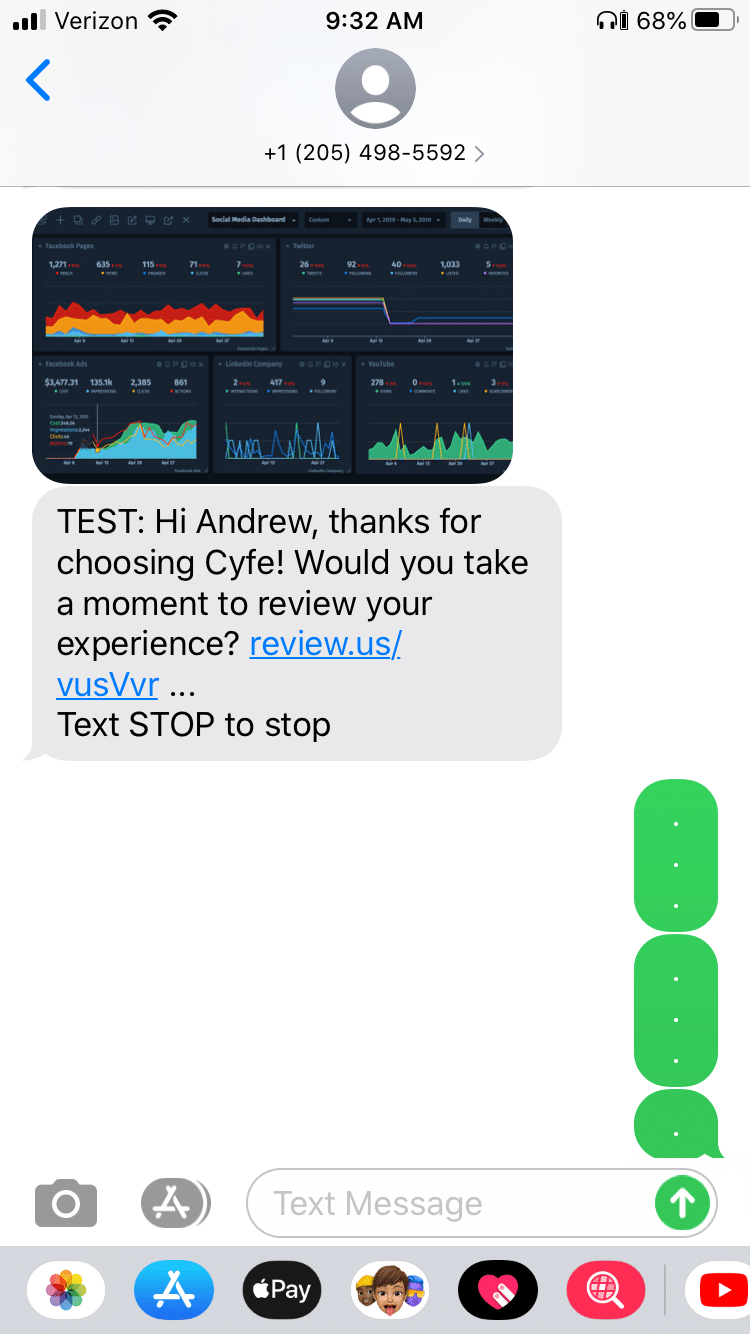
Order confirmation. This can be used to communicate with customers about an existing purchase, or simply a notification that confirms a decision already made.

Sales alerts. Share discounts, price reductions, increases, or upcoming products with customers.
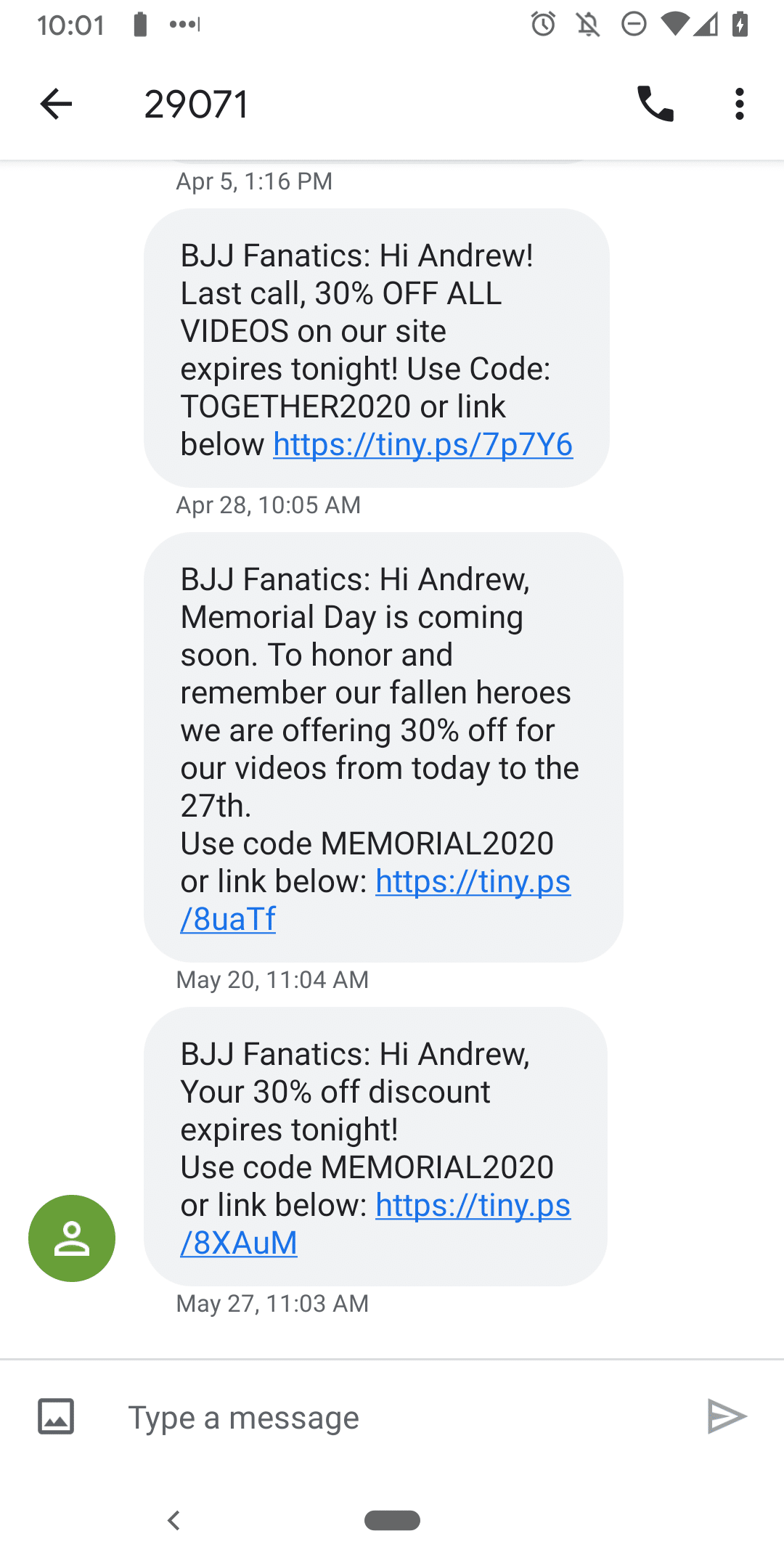
Reminders. Service providers can use reminders to confirm appointments with their customers. This helps to reduce missed appointments and no call/no shows.

Long-form messaging via MMS. Using the MMS protocol, you can send customers and subscribers long-form content.
If you’re an agency, you’ll want to approach this with a system in mind. It’s a good idea to have a set of predetermined policies and procedures regarding SMS marketing. If your agency is focused on a particular industry or niche, it may be a good idea to create a series of templates you can use to improve employee workflow.
Derek Johnson, CEO at Tatango, offers a helpful SMS framework you can use to create your own templates for agency clients.
If you’re looking for SMS content ideas for review requests, we’ve got you covered.
What about email?
If SMS is so effective and response rates are so high, why bother with email?
SMS vs. Email marketing
In a previous post, I answered this question.
Several pundits predicted the death of email, so it seemed as if SMS was the next best thing. Only email isn’t dying. It’s still growing! Statista predicts email will have substantial, consistent growth through 2023.
Here’s why that’s a problem.
In 2017, 269 billion emails were sent and received each day. That number is expected to climb to 333 billion emails in 2022. Only 26 billion SMS messages are sent each day. SMS is growing rapidly, but it hasn’t fully matured as a marketing channel.
What does this mean for marketers?
The best solution isn’t email or SMS. It’s email and SMS. These marketing channels complement each other nicely, in a way that generates high response rates for brands.
SMS marketing can be used successfully
The high response rates and demanding compliance requirements mean marketers need to pay close attention to the structure and setup of their campaigns. Here’s the good news; this work is front-loaded. With the right foundation and a clear set of examples to follow, SMS marketing becomes manageable.
SMS text marketing has a 98% open rate, with 90% of messages read in three minutes.
As a marketing channel, this is a tool that can produce amazing results for your customers and your business. Follow the rules, create the right structure, and you’ll find your SMS campaigns are successful and consistent.

